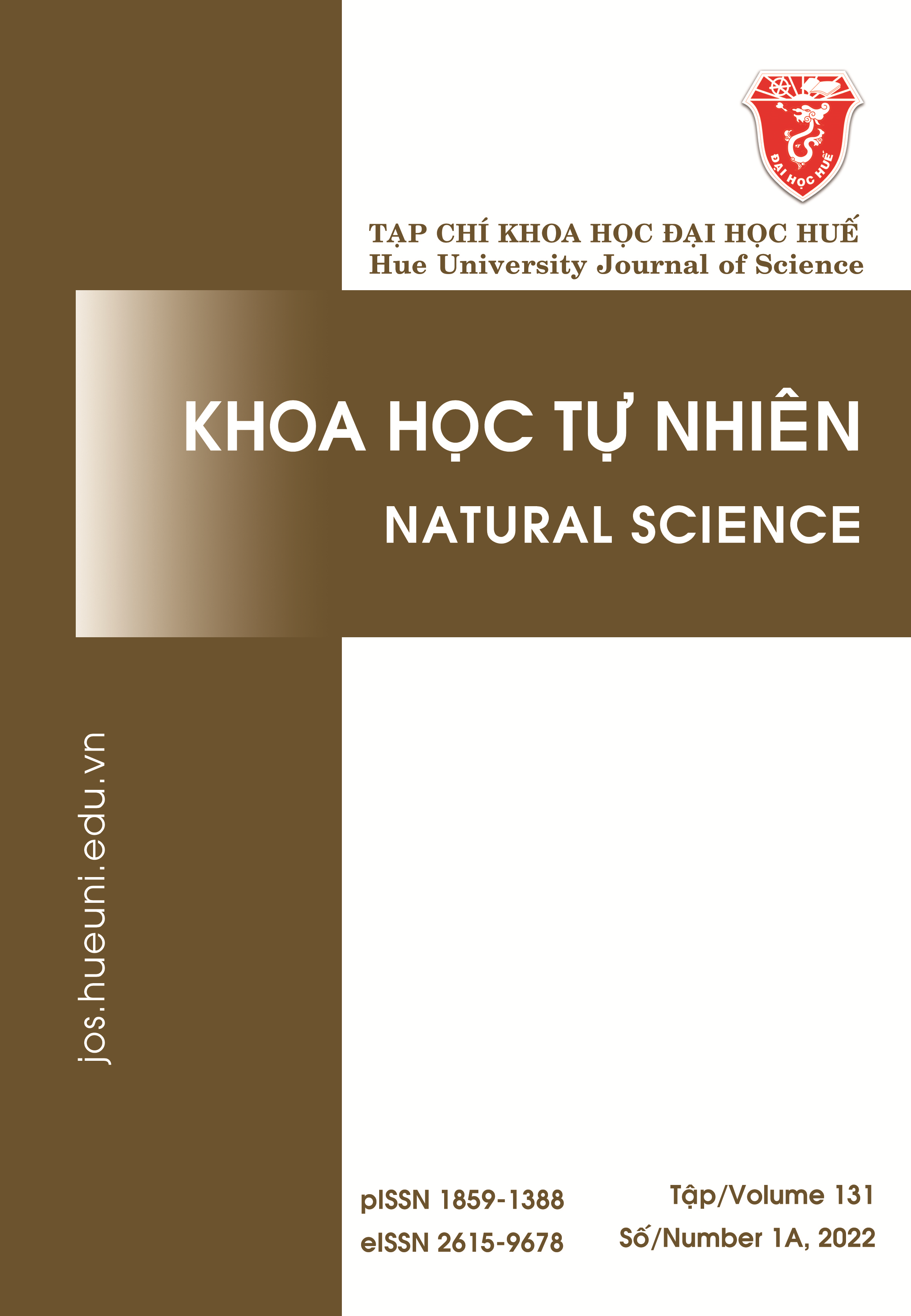Tóm tắt
Trong nghiên cứu này, hydrogel glucomannan-poly(acrylic acid) đã được tổng hợp ở các điều kiện khác nhau với mục đích ứng dụng vào hệ thống phân phối thuốc 5-amiosalicylic acid (5-ASA) có kiểm soát. Hydrogel được tạo thành từ glucomannan và acrylic acid với tác nhân liên kết N,N-methylene-bis-(acrylamide). Cấu trúc và hình thái của hydrogel được nghiên cứu bằng phổ hồng ngoại chuyển dịch Fourier (FT-IR) và kính hiển vi điện tử quét (SEM). Tỷ lệ trương nở, tính chất phân huỷ sinh học và nhạy pH, mối quan hệ giữa tỷ lệ trương nở của hydrogel và khả năng hấp phụ-giải hấp 5-ASA, ảnh hưởng của pH môi trường để khả năng giải hấp 5-ASA và động học hấp phụ 5-ASA đã được nghiên cứu. Kết quả cho thấy tỷ lệ trương nở của các mẫu hydrogel là 16,70–56,21 lần. Tỷ lệ trương nở của hydrogel thấp ở môi trường pH 1 và tăng lên đáng kể trong môi trường pH 7,4. Cellulase (400 U·mg–1) trong môi trường đệm pH 7,4 ở 37 °C có khả năng phân hủy sinh học hydrogel (69,8% sau 10 ngày; nồng độ cellulase 1,5 g·L–1). Hydrogel có cả khả năng hấp phụ và giải hấp tốt 5-ASA. Động học quá trình hấp phụ tuân theo mô hình biểu kiến bậc 1. Đây là vật liệu có tiềm năng ứng dụng trong phát triển hệ thống phân phối thuốc thông minh.
Tài liệu tham khảo
- Wen X, Cao X, Yin Z, Wang T, Zhao C. Preparation and characterization of konjac glucomannan–poly (acrylic acid) IPN hydrogels for controlled release. Carbohydrate polymers. 2009;78(2):193-198.
- Liu ZL, Hu H, Zhuo RX. Konjac glucomannan‐graft‐acrylic acid hydrogels containing azo crosslinker for colon‐specific delivery. Journal of Polymer Science Part A: Polymer Chemistry. 2004;42(17):4370-4378.
- Alonso SM, Teijeiro OD, Remunan LC, Alonso MJ. Glucomannan, a promising polysaccharide for biopharmaceutical purposes. European Journal of Pharmaceutics and Biopharmaceutics. 2009;72(2): 453-462.
- Du J, Sun R, Zhang S, Zhang LF, Xiong CD, Peng YX. Novel polyelectrolyte carboxymethyl konjac glucomannan–chitosan nanoparticles for drug delivery. I. Physicochemical characterization of the carboxymethyl konjac glucomannan–chitosan nanoparticles. Biopolymers: Original Research on Biomolecules. 2005;78(1):1-8.
- Shabir F, Erum A, Tulain UR, Hussain MA, Ahmad M, Akhter F. Preparation and characterization of pH sensitive crosslinked Linseed polysaccharides-co-acrylic acid/methacrylic acid hydrogels for controlled delivery of ketoprofen. Designed monomers and polymers. 2017;20(1):485-495.
- Zhang H, Zhai D, He Y. Graphene oxide/ polyacrylamide/carboxymethyl cellulose sodium nanocomposite hydrogel with enhanced mechanical strength: preparation, characterization and the swelling behavior. RSC Advances. 2014;4(84):44600-44609.
- Wang Y, Liu J, Li Q, Wang Y, Wang C. Two natural glucomannan polymers, from Konjac and Bletilla, as bioactive materials for pharmaceutical applications. Biotechnology letters. 2015;37(1):1-8.
- Chen LG, Liu ZL, Zhuo RX. Synthesis and properties of degradable hydrogels of konjac glucomannan grafted acrylic acid for colon-specific drug delivery. Polymer. 2005;46(16):6274-6281.
- Ho YS, McKay G. A comparison of chemisorption kinetic models applied to pollutant removal on various sorbents. Process Safety and Environmental Protection. 1998;76(4):332-340.
- Qiu Y, Park K. Environment-sensitive hydrogels for drug delivery. Advanced drug delivery reviews. 2001;53(3):321-339.
- Shah N, Patel K. Formulation and development of hydrogel for poly acrylamide-co-acrylic acid. Journal of Pharmaceutical Science and Bioscientific Research. 2014;4(1):114-120.

công trình này được cấp phép theo Creative Commons Ghi công-Chia sẻ tương tự 4.0 License International .
Bản quyền (c) 2021 Array




